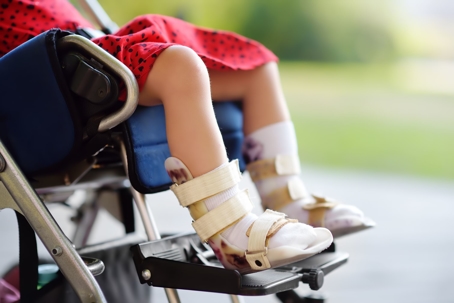Cerebral palsy (CP) is a physical disability that affects movement, reflexes, posture, muscle tone, and even speaking abilities. CP is the result of brain injury or malformation while the brain is still developing, which can take place before, during, or after birth.
While there are several causes of CP, one of the most avoidable—and the one we will be discussing within this blog—involves medical malpractice. In fact, about 10% of children with CP developed the condition as a result of doctor negligence.
Unlike some injuries that heal with time and medical care, cerebral palsy is one that is a lifelong condition. While treatments are available to alleviate symptoms and help the individual live a relatively normal life, CP is not curable or reversible.
This means that treatment may be an ongoing, lifelong cost. If your loved one developed cerebral palsy as a result of a doctor’s negligence, you may be able to pursue a birth injury case against the negligent medical provider.
However, before you even look at any settlement offers, you should know the potential lifelong costs associated with CP so you don’t take anything less than what your family deserves.
Types of Cerebral Palsy
The actual treatment that your child with cerebral palsy may need will depend on the type and severity of their condition.
Cerebral palsy is broken down into four categories, based on how the brain damage has impacted their overall mobility. In general, there are four major types of CP: spastic, athetoid, ataxic, and mixed.
Spastic
Spastic cerebral palsy is the most common type of CP, making up about 70-80% of all cases. It is caused by damage to the brain’s motor cortex, which controls voluntary motor functions, and the pyramidal tracts, which help send messages from the brain to the muscles. Common signs of spastic CP include:
- Exaggerated or jerky movements
- Awkward reflexes
- Stiff muscles or body parts
- Contractures (muscles or joints that are permanently tightened/flexed)
- Abnormal walk
Athetoid
Also known as “non-spastic cerebral palsy,” athetoid CP causes the muscle tone to fluctuate between loss of strength and rigid movement or firmness. It is caused by damage to the brain’s basal ganglia, which regulates motor function and eye movements, as well as possible damage to the cerebellum, which is responsible for balance and coordination.
One of the key characteristics of athetoid CP is involuntary movements of the face, torso, and limbs. Other common symptoms include:
- Stiff or rigid body
- Floppiness in the limbs or body
- Problems with posture
Ataxic
Ataxic cerebral palsy is caused by damage to the cerebellum, which mainly leads to problems with coordination and balance as well as voluntary movements. Common symptoms of ataxic CP include:
- Tremors
- Reduction in muscle tone
- Speech problems
- Trouble with depth perception
- Shakiness and/or tremors
- Walking with feet spread apart widely
Mixed
Brain damage can occur in multiple locations of the brain. In these cases, it is possible for the affected individual to develop multiple types of cerebral palsy, also known as “mixed” CP. They may have various types of characteristics that fit into any of the three categories above.
Location of Movement Problems
In addition, the areas of the body affected by CP have a lot to do with the severity of the condition. An individual with motor disabilities may suffer from one of the following:
- Monoplegia. Movement of one limb is affected, such as in an arm or leg.
- Diplegia. Two limbs are affected, usually the legs.
- Hemiplegia. One side of the body is affected, with arms/hands more impacted than legs.
- Triplegia. Three limbs are affected.
- Quadriplegia. All four limbs are affected, but the legs are affected worse.
- Double hemiplegia. All four limbs are affected, but the arms are affected worse.
Determining the Lifelong Costs
There are many costs associated with almost all types and cases of CP, including:
- Long-Term physical therapy, and other therapies
- Rehabilitation
- Medications
- Nursing care
With all that said, the lifelong costs of cerebral palsy will vary based on how severe one’s condition is and what types of the body are or will be affected by the condition.
For instance, an individual with spastic quadriplegia will most likely not be able to walk or function normally without daily nursing care. They may require much more intensive and regular sessions of physical therapy, rehabilitation, and medication.
They are also more susceptible to more long-term physical complications associated with CP, such as:
- Seizures
- Eating/drinking problems
- Musculoskeletal disorders
- Respiratory disorders
- Loss of hearing and/or eyesight
Legal Guidance from a Birth Injury Attorney
If your child developed cerebral palsy due to a medical worker’s negligent actions, you and your family deserve compensation for what you have been through. We understand that no amount of compensation may be able to entirely make up for your child’s debilitating condition.
If your child suffered a birth injury that led to CP, Angel Law will help you seek financial recovery for all the costs of your child’s condition. In addition, your family deserves compensation for the emotional trauma of your child’s birth injury and diminished quality of life.
Our compassionate legal team is here to be your legal advocates during this period so you can focus on healing with your family.
Contact Angel Law at (503) 862-8666 to get started on your case.
